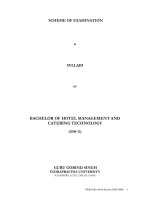- Trang chủ >>
- Khoa Học Tự Nhiên >>
- Vật lý
prehistoric and protohistoric cyprus identity insularity and connectivity may 2008
Bạn đang xem bản rút gọn của tài liệu. Xem và tải ngay bản đầy đủ của tài liệu tại đây (6.06 MB, 518 trang )
PREHISTORIC & PROTOHISTORIC CYPRUS
This page intentionally left blank
Prehistoric and
Protohistoric Cyprus
Identity, Insularity, and Connectivity
A. BERNARD KNAPP
1
3
Great Clarendon Street, Oxford ox26dp
Oxford University Press is a department of the University of Oxford.
It furthers the University’s objective of excellence in research, scholarship,
and education by publishing worldwide in
Oxford New York
Auckland Cape Town Dar es Salaam Hong Kong Karachi
Kuala Lumpur Madrid Melbourne Mexico City Nairobi
New Delhi Shanghai Taipei Toronto
With oYces in
Argentina Austria Brazil Chile Czech Republic France Greece
Guatemala Hungary Italy Japan Poland Portugal Singapore
South Korea Switzerland Thailand Turkey Ukraine Vietnam
Oxford is a registered trade mark of Oxford University Press
in the UK and in certain other countries
Published in the United States
by Oxford University Press Inc., New York
ß A. Bernard Knapp 2008
The moral rights of the author have been asserted
Database right Oxford University Press (maker)
First published 2008
All rights reserved. No part of this publication may be reproduced,
stored in a retrieval system, or transmitted, in any form or by any means,
without the prior permission in writing of Oxford University Press,
or as expressly permitted by law, or under terms agreed with the appropriate
reprographics rights organization. Enquiries concerning reproduction
outside the scope of the above should be sent to the Rights Department,
Oxford University Press, at the address above
You must not circulate this book in any other binding or cover
and you must impose the same condition on any acquirer
British Library Cataloguing in Publication Data
Data available
Library of Congress Cataloging-in-Publication Data
Data available
Typeset by SPI Publisher Services, Pondicherry, India
Printed in Great Britain
on acid-free paper by
Biddles Ltd., King’s Lynn, Norfolk
ISBN 978–0–19–923737–1
13579108642
To all my Cypriote colleagues—in particular Vassos Karageorghis, Vasiliki
Kassianidou, and Sophocles Hadjisavvas—who have helped in so many
diVerent ways to make my scholarly life a truly pleasant, exciting and
gratifying experience.
This page intentionally left blank
Preface and Acknowledgments
Over the past three decades, archaeologists working on Cyprus have produced
an extraordinary amount of information stemming from new Weldwork
(excavations, survey projects) and new research on individual classes of
material (including single artefacts). And yet, with two recent exceptions
(Bolger 2003; Steel 2004) that follow very diVerent research agendas from
my own, there has been no attempt to integrate all this new work and
information into a comprehensive presentation of Cyprus’s Bronze and
Early Iron Ages. For such research-oriented reasons, and because I lecture
in honours and postgraduate taught courses (Glasgow University, Depart-
ment of Archaeology) dealing speciWcally with Cypriot and Mediterranean
prehistory, I have long felt the need to produce an up-to-date, scholarly and
provocative synthesis of all the archaeological and documentary evidence
related to Cyprus’s Bronze–Early Iron Ages.
With teaching support provided by the University of Glasgow Faculty of
Arts and the Department of Archaeology (especially Peter van Dommelen and
Michael Given), and through Wnancial support from the AHRC (Arts and
Humanities Research Council) Study Leave Programme (AN 4164/APN
16926) as well as a British Academy Small Grant (SG-37737), I was able
to take a full year’s study leave (January–December 2004). During this time,
I conducted the bulk of the research essential for this monograph; the Wnal
writing of it has taken a further two years, alongside normal teaching and
administrative demands.
The complexity and breadth of the topics, materials and ideas covered in
this volume presented a real challenge, and I am deeply indebted to the
following individuals, listed in alphabetical order, for their comments on
earlier drafts of various sections, or on papers and lectures related to the
end product. I relied heavily on their comments, but the opinions expressed
and the interpretations presented in this study remain my own responsibility,
not theirs.
John Bennet (University of SheYeld), on Linear B documents
Emma Blake (Tufts University), especially on habitus
Stephanie Budin (Temple University), on Cypriot and Levantine deities and syn-
cretism
Shlomo Bunimowitz, Yuval Goren (Tel Aviv University), on analyses of Alashiya
tablets
Kevin Fisher (University of Toronto), on ProBA architecture, monumentality and
memor y
Marina Gkiasta (Leiden University), on Crete and Cretan identities
Sophocles Hadjisavvas (Director, Thetis, Limassol, Cyprus), on Alassa Paleotaverna
Susan Helft (University of Pennsylvania), on contacts between Cyprus and Hittite
Anatolia
Maria Iacovou (University of Cyprus), on Early Iron Age Cyprus
Priscilla Keswani (independent scholar), on Bronze Age mortuary practices
Peter Loizos (London School of Economics), on ethnicit y and identity
Sturt Manning (Cornell University), on Maroni, and PreBA migrations
Robert Merrillees (independent scholar), on PreBA migrations
James D. Muhly (American School of Classical Studies, Athens), on Alashiya and
Iadnana
Yiannis Papadakis (University of Cyprus), on (Cypriot) ethnicity and identity
Anthony Spalinger (University of Auckland), on aspects of Egyptian documents
Stuart Swiny (SUNY Albany), on various aspects of PreBA architecture and storage
Peter van Dommelen (University of Glasgow), on hybridization and habitus
Jenny Webb (La Trobe University, Melbourne), on various aspects of the PreBA
(gender, dating) and the ProBA (architecture and monumentality, seals and
sealings)
I also owe a debt of thanks to three anonymous reviewers of earlier drafts of
this work, in particular for their piercing commentaries about structure,
focus, and emphasis.
For papers, books and theses related to this study, I am indebted to the
following scholars:
Albert Ammerman (Colgate University), for preprints of papers on what are likely
the earliest, pre-Neolithic sites on Cyprus (now Ammerman and Noller 2005;
Ammerman et al. 2006)
Sophia Antoniadou (Pierides Museum, Athens), for her Ph.D. thesis (Edinburgh,
2004), especially as related to certain historical aspects of the Aegean ‘colonization’
of Cyprus
John F. Cherry (Brown University), for various papers and references on Mediter-
ranean island archaeology
Lindy Crewe (University of Manchester), for copies of her Ph.D. thesis (Edinburgh,
2004) and another paper in press, especially as related to the status of Enkomi
Kevin Fisher (University of Toronto), for a copy of his paper on architecture and
inequality on Late Bronze Age Cyprus (Fisher 2006)
Giampaolo Graziadio (Universita
`
de Pisa), for a pre-publication copy of his paper
on Aegean inXuence in Cypriot seals (Graziadio 2004)
David Frankel and Jenny Webb (La Trobe University, Melbourne), for endless
papers related to their excavations at Marki Alonia (and for their tolerance of my
contrary ways)
viii Preface and Acknowledgments
Maria Iacovou (University of Cyprus), for various papers on Early Iron Age Cyprus
Edgar Peltenburg (University of Edinburgh), for preprints of papers on Late
Chalcolithic Cyprus
Johannes Siapkas (University of Uppsala, Sweden), for a copy of his book on
ethnicity (Siapkas 2003)
Peter van Dommlen (University of Glasgow), for various papers on hybridization
I also want to thank the following people for producing, or providing me
with copies of, several illustrations used in this volume:
Luke Sollars (University of Glasgow), for the maps and for Wnalizing several other
Wgures
Timmy Gambin (independent photographer) and Nick Vella, University of Malta,
for images of Malta
David Frankel, Jenny Webb, and Rudy Frank (La Trobe University, Melbourne), for
images related to their Weldwork at Marki Alonia, Cyprus
Stuart Swiny (SUNY–Albany) and photographer Doug las Kuylenstierna, for images
related to Weldwork at Sotira Kaminoudhia, Cyprus
Michael Given (University of Glasgow), for images related to our Weldwork in
Cyprus
Sophocles Hadjisavvas (Thetis Foundation, Limassol, Cyprus), for images related
to Weldwork at Alassa Paleotaverna (provided by Cyprus Museum, Nicosia)
Priscilla Keswani (independent scholar), for Figure 35 (Enkomi tomb types)
Alison South, for images related to Weldwork at Kalavasos Ayios Dhimitrios, Cyprus
Edgar Peltenburg (University of Edinburgh), for Figure 43 (Enkomi ‘fortress’)
Kevin Fisher (University of Toronto), for Figures 44a, b (plans of Enkomi’s ‘Ashlar
Building’)
Jennifer Webb (University of Melbourne), for Figures 29a (Paleoklichia seal im-
pression) and 45 (locus of Horned God, Enkomi).
I have dedicated this volume to all my Cypriote colleagues, but in particular
to the following scholars:
(1) Vassos Karageorghis, who has (almost) always supported my research and
Weldwork on Cyprus, even though my theoretical approach, as well as my
writing style, oVered part icular challenges to his own ways of under-
standing Cypriot archaeology;
(2) Vassiliki Kassianidou, who has served not only as my closest Cypriote
colleague on three separate Weld projects in Cyprus, but has worked with
me on two of them as co-director;
(3) Sophocles Hadjisavvas, who not only supported my research over the
years, but as Director of the Cyprus Department of Antiquities facilitated
in every possible way the three Weld projects I have directed on the island.
Preface and Acknowledgments ix
I also wish to mention several other Cypriotes by name, who were instrumental
in facilitating my Weldw ork projects: George Constantinou (former Director of
the Cyprus Geological Survey), Andreas P anayiotou (formerly of the Cyprus
Geological Survey and Ministry of A griculture), Constantine Xydas (former
Director, H ellenic Mining Compan y), Demos Christou (former Director, Depart-
ment of Antiquities), and Vathoulla Moustoukki (Secretary par excellence,
Cyprus American Archaeological Resear ch Institute). Several other Cypriotes
hav e been instrumental in teaching me about the archaeology and history of
their island, and without excluding others I would single out in this regard Maria
Iaco vou, Dimitris Michaelides, and George Papasa vvas (Univ ersity of Cyprus);
Despo Pilides, Maria Hadjicosti, Giorgos Georg hiou, and Pa vlos Flourentzos
(all of the C ypriot Department of Antiquities, the last now its Director); Sophia
Antoniadou (Curator, Pierides Museum of Ancient C ypriot Art ( ‘Athinais ’),
Athens; and Pitsa K enti (Rizokarpason High School, Ministry of Education
and Culture, Cyprus). To all of y ou, I owe a debt I can nev er repay, but I
hope this book takes one small step in that dir ection.
x Preface and Acknowledgments
Contents
List of Illustrations xv
List of Abbreviations xx
1. Introduction 1
Mediterranean Islands, Insularity, and Identity 3
Background and Current Research 10
2. Issues, Agendas, and Archaeological Constructs 13
Island Archaeolog y, Insularity, and Island History 14
The Island Paradox 19
Insularity and Connectivity 22
Islandscapes 24
Island Identities 27
Social Identity and Ethnicity, Migration, Acculturation,
and Hybridization 30
Introduction 31
Social Identity 31
Social Identity and Archaeology 33
Ethnicity 35
Ethnicity and Archaeology 38
Archaeology, Ethnicity, and Habitus 41
Migration 47
Migration and Archaeology 50
Acculturation 53
Acculturation and Archaeology 55
Hybridization 57
Hybridization and Archaeology 59
Summary and Conclusions 62
3. Island Archaeology and Island History: Cyprus 66
Archaeological Constructions: Innovation and Change 66
Prehistoric Bronze Age (PreBA) Cyprus: A Social Approach 68
Spatial Organization and Cultural Sequences 69
Production and Exchange 74
Production, Exchange, and Identity 81
Material Culture and Mortuary Practices 82
Mortuary Practices, Materiality, and Identity 86
Representations 87
Representation and Identity 92
Individuals in Archaeology? 92
Individuals in the Prehistoric Bronze Age 95
Individuals and Identity—Broader Issues 101
Migration and Hybridization 103
The Anatolian Perspective 104
An Alternative Perspective 110
Hybridization in the PreBA 114
Migration, Hybridization, and Identity 129
4. Protohistoric Bronze Age Cyprus (ProBA):
A Sociohistorical Approach 131
Settlement Trends 134
Socio-political Organization 144
Seals, Sealings, and Socio-political Organization 153
Socio-political Organization and Identity 158
xii Contents
Production and Exchange 159
Production, Exchange, and Identity 172
Gendered Representations 173
Gendered Representations and Identity 186
Mortuary Practices 186
Mortuary Practices and Identity 199
Architecture, Monumentality, and Memory 201
The Case for Cyprus 206
Monumental Structures of the ProBA 211
Special-Purpose Sites and Structures of the ProBA 233
Monumentality, Memory, and Identity 239
Migrations and the Aegean ‘Colonization’ of Cyprus 249
Other Aspects of Material Culture 259
Migration and Hybridization in the ProBA 264
Other Aspects of Material Culture 268
5. The Earliest Iron Age: LC IIIB 281
Hybridization in LC IIIB 286
Historicity and Identity in Early Iron Age Cyprus 290
6. Island History and Island Identity on Cyprus 298
Alashiya and Protohistory 298
The IdentiWcation of Alashiya with Cyprus 300
Ku-pi-ri-jo/a, A-ra-si-jo, and Cyprus 303
Alashiya—Cyprus in the Eastern Mediterranean 307
Economy and Polity 307
Society and Polity 315
The Political Organization of Cyprus/Alashiya 324
An Historical Overview of ProBA Cyprus: Texts and Archaeology 335
Contents xiii
Elishah, ’ls
ˇ
yy and Iadnana: The Early Iron Age of Cyprus 341
Archaeology, Texts, and Iron Age History 345
7. Insularity, Connectivity, and Social Identity on Prehistoric and
Protohistoric Cyprus 348
The Prehistoric Bronze Age 348
The Protohistoric Bronze Age 357
Early Iron Age Cyprus 368
8. Islanders, Insularity, and Identity in the Mediterranean 373
Island Identities 373
Island Identities: Cyprus and the Mediterranean 376
The Mediterranean and its Boundaries 382
Comparative Studies and Mediterranean Island Archaeology 386
Islands and Identities: Final Thoughts 388
References 391
Index 471
xiv Contents
List of Illustrations
1. Maps: (a) Cyprus in the Mediterranean, w ith sites, countries, and areas men-
tioned throughout the text; (b) Central Mediterranean; (c) Aegean; (d) Eastern
Mediterranean. Prepared by Luke Sollars.
2. Ggantija, Late Neolithic megalithic complex, Gozo, Malta. Photograph by
A. Bernard Knapp.
3. Prehistoric Bronze Age 2 double-headed plank Wgurine, Dhenia. Cyprus Mu-
seum, No.1943/IV–13/4.
4. View of cliVs and clouds on Gozo (Malta), taken at approximately six nautical
miles oV the northwestern coast. Photograph by Timmy Gambin (provided by
Dr Nicholas Vella, Department of Archaeology, University of Malta).
5. Kordin III boat model. Courtesy of the National Museum of Archaeology, Malta,
photographic archive (provided by Dr Nicholas Vella, Department of Archae-
ology, University of Malta).
6. Melanesian island trading rings. Original drawing by Christina Sumner; redrawn
by Luke Sollars.
7. Nuraghe Santa Barbara, Macomer, Sardinia. Photograph by A. Bernard Knapp.
8. Aerial photograph of Nuraghe Genna Maria, Villanovaforru, Sardinia. Courtesy
of Parco e Museo, Genna Maria, Villanovaforru, and its Director, Mauro Perra.
9. Prehistoric Bronze Age Cyprus (map): sites, (modern) towns, and other areas
mentioned in the text. Prepared by Luke Sollars.
10. PreBA site of Marki Alonia, view northeast. Photograph courtesy of David
Frankel and Jennifer M. Webb, Directors of excavations at Marki Alonia.
11. PreBA site of Sotira Kaminoudhia, showing Areas A, B, and C. Photograph by
Douglas Kuylenstierna, courtesy of Stuart Swiny, Director of excavations at Sotira
Kaminoudhia.
12. Electrum earrings: Sotira Kaminoudhia. Photograph by Douglas Kuylenstierna,
courtesy of Stuart Swiny, Director of excavations at Sotira Kaminoudhia.
13. Tools, pins, earrings, and other everyday copper objects: PreBA. Image courtesy of
Stuart Swiny (Wrst published in Biblical Archaeologist 52.4 [December 1989]
p. 189).
14. Red Polished bowl (‘enclosure model’) from Bellapais Vounous (Tomb 22 no. 26).
Courtesy of The Cyprus Museum, Nicosia.
15. Pierides Bowl (from Marki?). Prehistoric Bronze Age 1–2 Red Polished bowl, with
genre scene of the life cycle (Pierides Collection; Larnaca). Courtesy of The
Pierides Museum-Laiki Group.
16. Prehistoric Bronze Age 2 Plain Ware terracotta Wgurine, with breasts and penis.
(Kelvingrove Museum, Glasgow, No. ARCH NN 548). Courtesy of Kelvingrove
Museum and Art Galley, Glasgow.
17. Red Polished ware plank Wgurines, Prehistoric Bronze Age 2. (a) Cyprus Museum,
Nicosia. No. 1963/IV–20/12; (b) Cyprus Musuem, No. 1933/I–17/1 Vounous?).
Courtesy of The Cyprus Museum, Nicosia.
18. Late Chalcolithic – Philia phase BA potter y distribution in Karkotis Valley, with
location of Phlasou Koutroullis (Troodos Archaeological and Environmental
Survey Project).
19. Decorated ‘hob’ (P2000) from Marki Alonia, with designs similar to those on
plank Wgurines. Photograph by Rudy Frank; courtesy of David Frankel and
Jennifer M. Webb, Directors of excavations at Marki Alonia.
20. Red Polished model of ‘ploughing scene from tomb at Vounous’(Vounous, Special
Series no. 1, Cyprus Museum, Nicosia). Courtesy of The Cyprus Museum,
Nicosia.
21. Marki Alonia Phase D during Prehistoric Bronze Age 1 (EC I–II). Courtesy of
David Frankel and Jennifer M. Webb, Directors of excavations at Marki Alonia.
22. Protohistoric Bronze Age Cyprus: sites, (modern) towns, and other areas men-
tioned in the text. Prepared by Luke Sollars.
23. Model representing agricultural, metallurgical, and social processes within the
Protohistoric Bronze Age landscape, with site hierarchy indicated. Prepared by
Michael Given.
24. Approximate settlement/site sizes of Protohistoric Bronze Age. Prepared by
A. Bernard Knapp.
25. The Protohistoric Bronze Age smelting site Politiko Phorades—excavations, with
Kokkinorotsos ore source in background. Phorades Excavations, A. Bernard
Knapp.
26. ProBA cylinder seal impressions from various sites depicting oxhide ingots.
Original drawing by Christina Sumner; redrawn by Luke Sollars (after Knapp
1986b: 38–9, table 2).
27. Protohistoric Bronze Age 2 faience conical rhyton from Kition (Cyprus Museum,
Nicosia). Courtesy of The Cyprus Museum, Nicosia.
28. Protohistoric Bronze Age 3 relief-carved ivory gaming box from Enkomi, British
Tomb 58 (British Museum, London, Inv. no. 1894.4–1.996). ß The Trustees of
The British Museum.
29. (a) Analiondas Paleoklichia seal impression depicting an Aegean-style chariot
hunt. Courtesy of Jennifer M. Webb; (b) Protohistoric Bronze Age seal impression
xvi List of Illustrations
from Alassa Pano Mandilares showing a horse-drawn chariot in bull hunt.
Courtesy of Sophocles Hadjisavvas, Director of excavations at Alassa Pano Man-
dilares.
30. Type A, bird-faced, nude female Wgurine, holding an infant, Protohistoric Bronze
Age 2 (Cyprus Museum, Nicosia. No. 1934/IV–27/23). Courtesy of The Cyprus
Museum, Nicosia.
31. Type B, normal-faced, nude female Wgurine with grooved and painted pubic
triangle, Base-ring ware, Protohistoric Bronze Age 2 (Cyprus Museum, no. A
53). Courtesy of The Cyprus Museum, Nicosia.
32. Nude bronze female Wgurine, standing on oxhide ingot, probably ProBA 2
(Bomford Collection, Ashmolean Museum, No. 1971.888). Courtesy of The
Ashmolean Museum, University of Oxford.
33. Protohistoric Bronze Age female Wgurine (‘goddess with uplifted arms’) from
Limassol Komissariato (Limassol District Museum, no. 580/8). Courtesy of The
Limassol District Museum, and the Director, Department of Antiquities, Cyprus.
34. Katydhata Laonarka with tombs along and over the ridge at the left. Troodos
Archaeological and Environmental Survey Project. Prepared by Michael Given.
35. Multiple Protohistoric Bronze Age tomb types as represented at Enkomi (after
Keswani 2004: 111 Wg. 5.3). Courtesy of Priscilla Keswani.
36. Elite tombs at Kalavasos Ayios Dhimitrios situated beneath a N/S running street to
the west of monumental Building X. Courtesy of Alison South, Director of
excavations at Ayios Dhimitrios.
37. Grave goods (miscellaneous gold objects) accompanying burials in Tomb 11,
Kalavasos Ayios Dhimitrios. Courtesy of Alison South, Director of excavations
at Ayios Dhimitrios.
38. Protohistoric Bronze Age 2 (LC IIA–B) Tomb 13, built over new structures
(Building 1) at Maroni Tsaroukkas (after Manning 1998b: 48, Wg. 3). Re-drawn
by Luke Sollars.
39. Protohistoric Bronze Age 2 krater from Tomb 13 at Ayios Dhimitrios, showing a
woman looking from a building. Courtesy of Alison South, Director of excav-
ations at Ayios Dhimitrios.
40. Plan of Maroni Vournes with Ashlar, West, and Basin Buildings (after Manning
1998b: 52, Wg. 4). Re-drawn by Luke Sollars.
41 (a), (b) Plan and isometric reconstruction of Alassa Paleotaverna Building II (after
S. Hadjisavvas (ed.), From Ishtar to Aphrodite: 3200 Years of Cypriot Hellenism.
Treasures from the Museums of Cyprus, p. 32, Wg. 4. New York: Onassis Public
BeneWt Foundation, 2003). Courtesy of Sophocles Hadjisavvas.
42. Enkomi overall site plan showing various monumental, architectural, and archae-
ometallurgical features (after Courtois 1982: 156, Wg. 1). Re-drawn by Luke Sollars.
List of Illustrations xvii
43. Plan showing ‘devolution’ of the Enkomi ‘fortress’, Protohistoric Bronze Age 1–2 :
from top, Levels IB, IIA, IIB, IIIA (after Pickles and Peltenburg 1998: 89, Wg. 2).
Courtesy of Edgar Peltenburg.
44. (a) Isometric plans of Enkomi Ashlar Building: Level IIIA. Source: Fisher 2006
(after Dikaios 1969, plates 274, 277). Cour tesy of Kevin Fisher; (b) Isometric plans
of Enkomi Ashlar Building: Level IIIB. Source: Fisher 2006 (after Dikaios 1969,
plates 274, 277). Courtesy of Kevin Fisher.
45. Possible locus of the Horned God within Enkomi’s ‘Sanctuary of Horned God’
(after Webb 1999: 98, Wg. 40). Courtesy of Jennifer M. Webb.
46. Plan of Protohistoric Bronze Age 2 Kition, Area II, showing main architectural
features and archaeometallurgical installations (after Karageorghis 1976: 63–4,
Wg. 11). Re-drawn by Luke Sollars.
47. Sanctuary I, Protohistoric Bronze Age 3 Kouklia Palaepaphos, showing the
dressed limestone orthostats of the courtyard. Photograph by A. Bernard Knapp.
48. Protohistoric Bronze Age 2 ‘Sanctuary’ at Myrtou Pigadhes, Periods V–VI (after
Du Plat Taylor 1957: 11, Wg. 7). Re-drawn by Luke Sollars.
49. View over Hala Sultan Tekke Vyzakia, with modern town of Larnaca in back-
ground (October 2004). Photograph by A. Bernard Knapp.
50. Landward (eastern) wall at Maa Palaeokastro (November 2004). Photograph by
A. Bernard Knapp).
51. Gateway community model of Larnaca Bay sites, showing possible port settlement
for Pyla (Dhekelia) (after Stanley Price 1979: 80, Wg. 20). Re-drawn by Luke Sollars.
52. Protohistoric Bronze Age 2 (LH IIIA2) krater from Pyla Verghi, Tomb 1, no. 36
(Cyprus Museum, Nicosia, inv. no. CM 1952/IV–12/1). Courtesy of The Cyprus
Museum, Nicosia.
53. Alassa Paleotaverna: sunken rectangular feature in south wing, Building II, with
ashlar walls behind (October 2004). Photograph by A. Bernard Knapp.
54. Strainer jug from Kouklia (Tomb KA TI) with (a) hybridized Aegean- or Levan-
tine-style birds and (b) Cypriot-style bulls (Kouklia Museum, Cyprus). Courtesy
of The Kouklia Museum, and the Director, Department of Antiquities, Cyprus.
55. Ivory mirror handle from Kouklia Evreti Tomb KTE VIII, depicting Aegean-style
clad warrior (Cyprus Museum, Inv. no. K.T.E. T.8/34). Courtesy of The Cyprus
Museum, Nicosia.
56. Protohistoric Bronze Age 3 (LC IIC-IIIA) four-sided bronze stand, probably from
Episkopi (Kourion) (British Museum, Inv. no. BM 1920/12–20/1). ß The Trustees
of The British Museum.
57. Haematite cylinder seal from Enkomi, with Aegean-style clad male Wgure holding
two lions by the ears, Levantine fashion (Cyprus Museum, French Mission 1934,
Trial Trench 2). Courtesy of The Cyprus Museum, Nicosia.
xviii List of Illustrations
58. Protohistoric Bronze Age 3 (LC IIIA) statuette of the Horned God from Enkomi
(Cyprus Museum, Nicosia, no. 1948: 190). Courtesy of The Cyprus Museum,
Nicosia.
59. Protohistoric Bronze Age 3 (LC IIIA) statuette of the Ingot God from Enkomi
(Cyprus Museum, Nicosia, French Mission 1963, no. 16.15). Courtesy of The
Cyprus Museum, Nicosia.
60. Early Iron Age Cyprus: sites, (modern) towns, and other areas mentioned in the
text. Prepared by Luke Sollars.
61. Early Iron Age Proto-White Painted stirrup jar from the cemetery of Gastria Alaas
(Tomb 19, no. 3, Cyprus Museum). Courtesy of The Cyprus Museum, Nicosia.
62. Bronze obelos with Cypriot syllabic inscription, from Palaepaphos Skales (Tomb
49, no. 16, Cyprus Museum). Courtesy of The Cyprus Museum, Nicosia.
63. Gold sceptre from Tomb 40 at Episkopi Kaloriziki. Courtesy of The Cyprus
Museum, Nicosia.
64. Protohistoric Bronze Age 2 silver Wgurine with kilted male Wgure standing on a
stag, from Kalavasos Ayios Dhimitrios Tomb 12 (Cyprus Museum, K–AD 1599).
Courtesy of Alison South and The Cyprus Museum, Nicosia.
65. Step model illustrating episodes of social complexity alternating with periods of
stasis or collapse (after Allen 1984: 444, Wg. 2). Re-drawn by Luke Sollars.
66. Status insignia and ProBA ideological system (after Knapp 19 86b: Wg. 4).
Re-drawn by Luke Sollars.
List of Illustrations xix
List of Abbreviations
EA (El Amarna): cuneiform texts (letters) as numbered in J.A. Knudtzon, Die
El-Amarna Tafeln. 2 volumes. Leipzig: Hinrich, 1910, 1915.
KBo Keilschrifttexte aus Bog
˘
azko
¨
y. Berlin: Wissenschaftliche Vero
¨
Ventlichungen
der Deutschen Orient-Gesellschaft.
KUB Keilschrift Urkunden aus Bog
˘
azko
¨
y. Berlin: Institut fu
¨
r Orientforschung.
RS Ras Shamra—preWx for Weld numbers of tablets and other registered Wnds
of the French Archaeological Mission to Ras Shamra (Ugarit).
1
Introduction
Cyprus has long held a strategic, if somewhat liminal position in the
protracted history and prehistory of the Mediterranean world. The peoples
and cultures of Cyprus—past and present—have made major cultural and
economic impacts throughout the region. Yet no published work treats its
most formative periods—the Bronze Age and Early Iron Age—in a holistic
manner, and none even attempts to examine insularity and island identity
from a comparative, social and historical perspective. The study of Cyprus’s
prehistoric and early historic past has been dominated by a tendency to see
the island’s social, economic, cultural, and even artistic development as the
result of migrations, invasions, colonization, diVusion, or other external
factors, whether Near Eastern or Aegean (or both) in origin. Such an ap-
proach distorts the diachronic history of Cyprus and precludes attempts to
consider how insularity and local enterprise impacted on the islanders’
identity (or identities) and the emergence of a complex, hierarchical society.
The indigenous inhabitants of Cyprus remain unseen and unheard from such
a perspective, and this at a time when ‘multivocality’ and the local invigorate
and structure both historical and social scientiWc practice. To study how any
society changes, at any time, it is crucial Wrst to look at internal rather than
external factors. In turn, the changes observed must be seen as the result of
socio-cultural processes and individual human actions operating both within
and between the societies in question (Renfrew 2004: 263–4).
During the course of the Bronze Age (c.2700/2650–1100 bc), Cypriot
society underwent a transformation from an isolated, village-based culture
into an international, town-centred, perhaps even state-level polity. Interpret-
ations of these developments diVer radically. One school of thought main-
tains that migrating groups from Anatolia had a major impact on Cyprus’s
Early Bronze Age culture (e.g. Webb and Frankel 1999; Frankel 2000) whereas
another holds that local responses to social pressures and economic demand
(e.g. prestige-goods exchange) provided the stimulus for change (e.g. Man-
ning 1993; Knapp 1990a, 1993, 2001). Others see the development of social
complexity during the Late Bronze Age as stemming from processes of
urbanization, state formation, or ‘heterarchical’ society (Negbi 1986; Keswani
1996; Peltenburg 1996). The foundation of the island’s earliest Iron Age
society has long been associated with a colonization by people from the
Aegean region (e.g. Snodgrass 1988; Karageorghis 1994, 2001c; Iacovou
1999b), but the actual process involved is now widely debated (e.g. Sherratt
1992, 1998; Steel 1998, 2001; Leriou 2002a, 2002b). Although Cyprus’s rich
material record might be ‘read’ in all these diverse ways, none of these
interpretations fully engages the material ev idence with the relevant, contem-
porary, cuneiform and other documentary records (19th–8th centuries bc)
from ancient western Asia and the eastern Mediterranean, including the
Aegean, to attempt an historical approach (cf. Knapp 1979; Baurain 1984).
In terms of approach, I present Wrst (Chapter 1) a background discussion
of Mediterranean islands in general, treating more speciWcally current issues
and agendas relating to insularity, island archaeology, islandscapes, and island
identities. I then introduce (Chapter 2) several theoretical themes—ethnicity,
social identity, and habitus; migration and colonization; acculturation and
hybridization—that are revisited in the subsequent chapters on Cyprus. In
Chapters 3–5, where the material culture of prehistoric and protohistoric
Cyprus is presented essentially in chronological order (but not as a sequential
narrative ‘history’), my choice of topics is necessarily selective but intended to
be broadly representative of the Cypriot archaeological record. Thus I discuss
settlement trends and spatial organization, production and exchange, mor-
tuary practices, gendered representations, architecture and monumentality,
migrations and hybridization. In Chapter 6, I provide an in-depth, synthe-
sized analysis of all documentary evidence related to Bronze Age and Early
Iron Age Cyprus. These documents oVer crucial information for understand-
ing the social and economic facets, as well as the political organization of late
prehistoric and early protohistoric Cyprus; they also provide a unique per-
spective on issues related to insularity and island identity. In Chapter 7,
I integrate all this material and documentary evidence into a discussion of
diVerent Cypriot polities during the Bronze and Early Iron Ages, and the
consequent, ever-changing aspects of Cypriot island identities. In Chapter 8,
I consider the implications of the Cypriot case for a broader study of the large
Mediterranean islands, one that considers how factors such as insularity and
connectivity may impact on the social organization, geopolitical conWguration,
and social identity of prehistoric and early historic Mediterranean islanders.
In presenting my own particular view of Cypriot pre- and protohistor y,
I proceed on three diVerent levels of analysis and interpretation, On the Wrst
level, I reconsider and reformulate some of my own, earlier work on the major
social and economic transformation that ushered in the Cypriot Bronze Age
(e.g. Knapp 1990a, 1993, 2001), and reassess how the elite-driven inter-
national trade that t ypiWed the Middle–Late Bronze Ages impacted on several
2 Introduction
striking changes that appear for the Wrst time in the Cypriot archaeological
record: town centres; fortiWcations; Wrst use of writing; socially distinct
mortuary practices; intensiWed copper production; and increased interregio-
nal trade (e.g. Knapp 1986a, 1994, 1998).
On the second level, I consider how these developments and other, related
factors—spatial organization, monumental architecture, gendered represen-
tations, mortuary practices, hybridization, distance and the exotic—are re-
lated to two situations where archaeologists have sought to identify the
existence of migrating or colonizing ethnic groups on Cyprus:
. Beginning of the Early Bronze Age (Anatolians) (Webb and Frankel 1999;
Frankel 2000, 2005; cf. Knapp 2001).
. End of the Late Bronze Age and Early Iron Age (Mycenaeans) (Catling
1973; Nicolaou 1973; Karageorghis 1994; cf. Sherratt 1994; Steel 1998,
2001; Leriou 2002a, 2002b).
In the second situation, documentary evidence can be engaged fully and
integrated closely with the archaeological (e.g. Knapp 1996a).
On the third level, I consider how factors such as insularity, connectivity,
ethnicity, and hybridity impacted on island society and island identity, and
how islanders might have invoked insularity as a ‘resistant’ identity (Brood-
bank 2000: 33). Throughout I attempt to assess how islanders used material
culture consciously to fashion their identities and to establish island social,
economic, and political practices.
MEDITERRANEAN ISLANDS, INSULARITY,
AND IDENTITY (FIGURE 1a–d)
Amongst hundreds of islands scattered across the Mediterranean Sea, the
large islands of Sicily, Sardinia, Cyprus, Corsica, and Crete (in order of size)
stand out because of their spatial extent, natural resources, geographic con-
Wguration (relative isolation), and markedly diVerent cultural traditions. The
Maltese and Balearic (Mallorca, Menorca) islands, although much smaller in
size, also present strikingly diVerent traditions, not least in their monumental
building practices (Figure 2). The situation of all these islands on major
routes of interaction and commerce within the Mediterranean, moreover,
means that they frequently participated in Mediterranean-wide trends and
innovations (Bietti Sestieri et al. 2002: 420–9). What has been singularly
lacking in all previous archaeological research on these islands, however, is
Introduction 3
Figure 1: 1a: Map: Cyprus in the Mediterranean, with sites, countries, and areas mentioned throughout the text; 1b: central Mediterranean;
1c: Aegean; 1d: Eastern Mediterranean.









